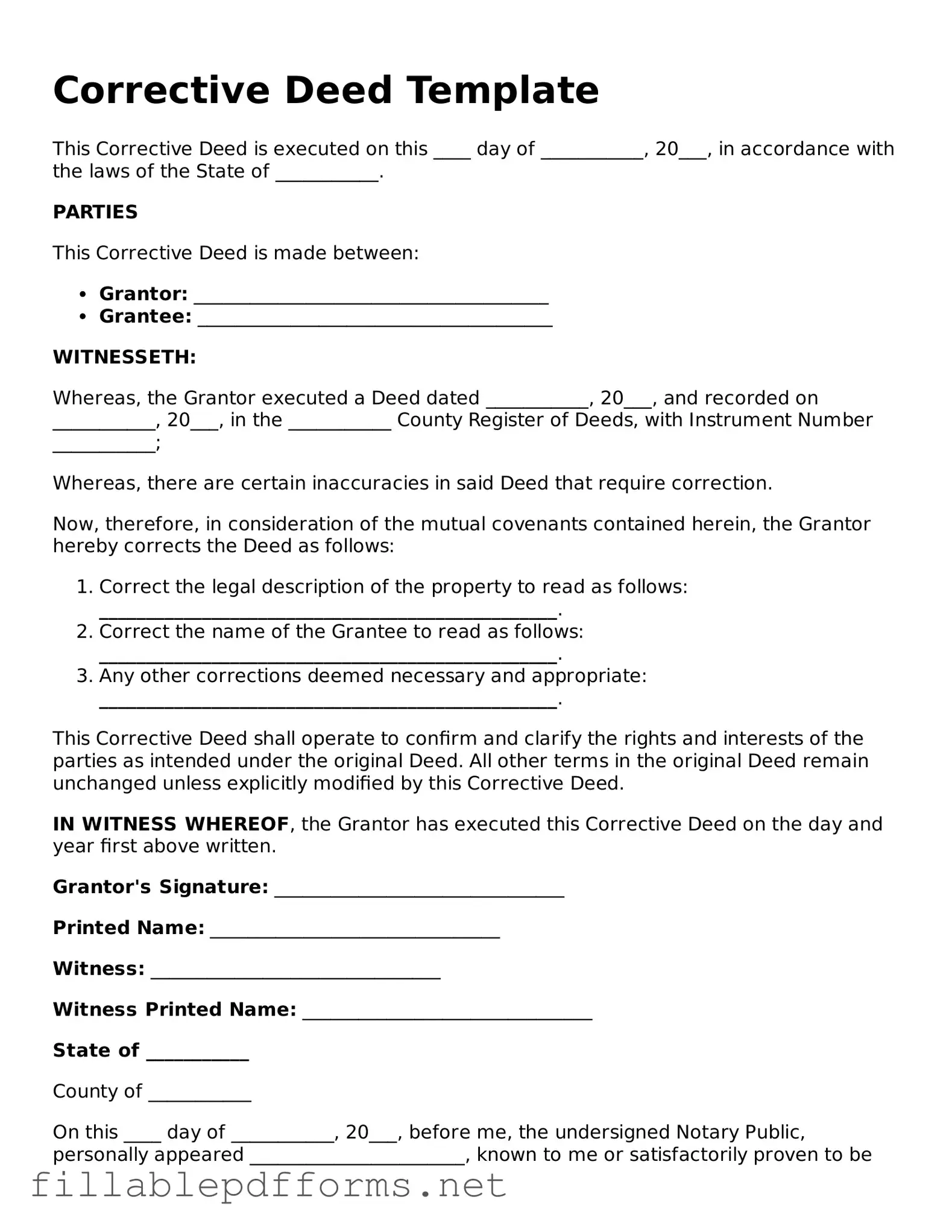When it comes to real estate transactions, accuracy in property documentation is crucial. The Corrective Deed form serves as a vital tool for addressing and rectifying errors found in previously recorded deeds. Whether it’s a misspelled name, an incorrect legal description, or other discrepancies that may arise during the transfer of property, this form allows property owners to make necessary corrections without having to start the entire process over. By filing a Corrective Deed, individuals can ensure that their property records reflect the true and accurate details, thus protecting their ownership rights and preventing potential disputes in the future. Understanding how to properly fill out and file this form is essential for anyone looking to maintain clear and accurate property records. This article will explore the key components of the Corrective Deed, the steps involved in its preparation, and the importance of timely corrections in the realm of property ownership.
